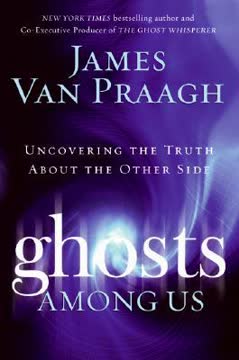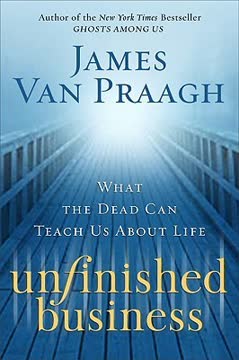Key Takeaways
1. Understanding the Holy Trinity of Body, Soul, and Spirit
While on Earth, I am Spirit that requires physical form in this dimension so I can experience conditions and learn lessons that other realms don’t provide.
The interconnectedness. The book introduces a unique perspective on the relationship between body, soul, and spirit, viewing them as a holy trinity. The body is the physical vessel, the soul is Spirit incarnate experiencing earthly life, and Spirit is the divine essence animating the soul. This framework helps readers understand their existence beyond the physical realm.
Defining the components. The body is likened to a machine, requiring maintenance to function efficiently. The soul is the unique, eternal aspect of self, connected to everything and experiencing a range of emotions and lessons on Earth. Spirit is the divine spark, the essence that animates the soul, connecting it to the oneness of all things.
Practical implications. Understanding this trinity encourages readers to care for their bodies, nurture their souls through enriching experiences, and connect with Spirit through mindfulness and love. It shifts the focus from merely existing to actively participating in the soul's journey.
2. Consciousness and the Power of Thought Shape Reality
Thoughts are creative energy, and they carve, create, and forge your future destiny.
Consciousness as awareness. Consciousness is defined as the awareness of "being," a sense of connection to all that exists. It's a dynamic state that changes from moment to moment, with various levels of awareness. Raising consciousness involves actively choosing thoughts and behaviors that align with higher emotions like love, joy, and peace.
Energy never dies. The book emphasizes that energy is constant and can change form. Quantum mechanics supports this idea, suggesting that subatomic particles can exist in multiple places simultaneously. This concept aligns with the spiritual belief that a divine force permeates everything.
Thoughts as reality. Thoughts have the power to affect and alter energy, shaping our future destiny. Emotions fuel thoughts, and love is the most potent energy. By focusing on positive thoughts and intentions, readers can manifest a more harmonious and fulfilling life.
3. Exploring the Realms Beyond: NDEs, OBEs, and Remote Viewing
We all have a sense sometimes that our souls exist outside space and time as we know it.
Expanding awareness. The book delves into near-death experiences (NDEs), out-of-body experiences (OBEs), astral projection, and remote viewing as ways to glimpse the true nature of the soul. These phenomena suggest that consciousness can exist outside the physical body and transcend the limitations of space and time.
Near-death experiences. NDEs involve a sense of peace, unconditional love, and encounters with deceased loved ones. These experiences often lead to life-changing realizations and a reprioritization of values. The book references the work of Dr. Eben Alexander, a neurosurgeon who experienced an NDE and later discovered his biological sister was his guide during the experience.
Out-of-body experiences. OBEs involve the consciousness leaving the physical body, while astral projection is a form of OBE that involves traveling to other dimensions. Remote viewing allows individuals to describe distant locations or targets using extrasensory perception. These practices can provide a profound sense of knowing and decrease the fear of death.
4. Death: A Doorway to a New Beginning
To all those who may listen, there is no need to fear the crossing from your world to this. It is a great adventure.
Death as change. The book reframes death as a transition, a change of state rather than an end. It encourages readers to view death as a natural part of the soul's journey, a return to its true home. This perspective can alleviate the fear and anxiety associated with death.
The transition process. The experience of death varies depending on the circumstances. Sudden deaths may result in a quick, barely noticeable transition, while prolonged illnesses may allow the soul to move in and out of the body. The book emphasizes the importance of allowing souls to transition peacefully, sometimes requiring encouragement or permission to leave the physical realm.
Loved ones await. Souls are never alone in the transition process. Deceased loved ones and spirit guides are present to welcome and assist them. Deathbed experiences often involve visions of these beings, providing comfort and reassurance.
5. Navigating the Spirit World: Levels and Lessons
The Spirit World is a place of Divine order: there are souls going out and souls coming in all the time.
Worlds within worlds. The Spirit World is not a single destination but a series of interconnected levels or planes. These levels include the Astral World, the Ethereal World, and the Celestial Realm, each with its own characteristics and purpose.
The Astral World. This is the first destination for souls after death, a receiving station where they are greeted by loved ones. It resembles the earthly existence, with homes, gardens, and opportunities for creative expression. The Astral World reflects the beliefs and attitudes held during life.
The Ethereal World. Also known as the Thought Plane, this realm is made up of pure consciousness and is the source of inspiration and wisdom. The Celestial Realm, or Angelic Realm, is inhabited by highly evolved beings who radiate love and assist souls in their journey.
6. Reincarnation: The Soul's Journey Through Lifetimes
Deep within the soul fabric are recorded the many lifetimes, people, and experiences it has ever gone through.
The purpose of reincarnation. Reincarnation is the belief that souls choose to manifest in human form to develop knowledge and wisdom. Each lifetime offers opportunities to learn, experience, expand, and evolve. The ultimate goal is to bring the consciousness of love and understanding into everyday existence.
Karma and GPS. Karma is a benign energy, and the intent behind it determines its impact. Before each incarnation, souls plan their next life, choosing opportunities and situations that will facilitate growth and address karmic debts. The book likens intuition to a "GPS for the Soul," guiding individuals toward their true path.
Questions about reincarnation. The book addresses common questions about reincarnation, such as why we don't remember past lives, what determines when a spirit will reincarnate, and whether souls come back as animals. It also explores the concept of soul mates and soul groups reincarnating together.
7. Soul Lessons: Relationships as Mirrors and Teachers
Relationships are the cornerstone of a soul’s growth and learning.
Relationships as curriculum. Relationships are central to the soul's learning process on Earth. Family, friends, and intimate partners serve as mirrors, reflecting aspects of ourselves that need attention and growth. Challenges within relationships offer opportunities to learn valuable lessons.
Soul groups. Individuals incarnate with soul groups, interacting as family, friends, and lovers. These groups have shared past-life experiences and intricate energy patterns. Dysfunctional families present opportunities for learning and healing.
Specific soul lessons. The book provides a list of common life challenges and their corresponding soul lessons, such as abundance, abuse, addiction, change, envy, failure, family, fear, forgiveness, grief, guilt, health, judgment, relationships, and self-esteem. By identifying recurring themes and patterns, readers can gain insight into their soul's purpose.
8. Making Soul Choices: Love Over Fear
Love is what we were born into, and fear is what we learned here.
Love vs. fear. Life is a series of choices, and the most important decisions are rooted in either love or fear. Love is the soul's natural state, while fear is a learned emotion. Choosing love leads to harmony and fulfillment, while choosing fear creates conflict and dissatisfaction.
Evaluating choices. The book encourages readers to review their major life choices and identify the motivations behind them. Choices based on love and intuition tend to have positive outcomes, while those based on fear or external expectations often lead to unhappiness.
Listening to the soul's voice. Trusting intuition and following the heart are essential for making soul choices. The book emphasizes the importance of mindfulness, commitment, and inner peace in navigating life's challenges.
9. Living a Soul-Filled Life: Awareness and Joy
Live your life in such a manner that when you die, the world cries and you rejoice.
The power to leave a legacy. Everyone has the power to make a positive impact on the world. This can be achieved through grand gestures or simple acts of kindness and compassion. The key is to live a life that reflects the soul's true nature.
Living in the moment. A soul-filled life involves being consciously aware of the present moment and appreciating the beauty and wonder of the world. It requires trusting that events will unfold in Divine order and making choices that align with the soul's purpose.
Becoming aware. The first step in living a soul-filled life is to cultivate awareness. This involves sitting in silence, listening to the body, observing thoughts and emotions, and assessing expectations. By becoming more self-aware, individuals can make better choices and create a more joyful and fulfilling existence.
Last updated:
FAQ
1. What is "Adventures of the Soul: Journeys Through the Physical and Spiritual Dimensions" by James Van Praagh about?
- Exploration of the Soul’s Journey: The book explores the nature, purpose, and journey of the soul through both physical life and spiritual dimensions.
- Medium’s Perspective: Written by renowned medium James Van Praagh, it draws on his decades of experience communicating with spirits and teaching spiritual development.
- Life, Death, and Beyond: It covers topics such as the soul’s existence before birth, the process of death, the afterlife, reincarnation, and how souls learn and evolve.
- Practical Spiritual Guidance: The book offers meditations, exercises, and advice for readers to connect with their own soul and live a more meaningful, love-filled life.
2. Why should I read "Adventures of the Soul" by James Van Praagh?
- Unique Spiritual Insights: The book provides a rare, firsthand account of the afterlife and soul’s journey from a respected medium.
- Answers to Big Questions: It addresses universal questions about life’s purpose, what happens after death, and the meaning of spiritual experiences.
- Tools for Personal Growth: Readers gain practical tools for meditation, mindfulness, and connecting with their soul’s purpose.
- Comfort and Hope: The book offers reassurance about the continuity of consciousness and the loving nature of the universe, helping to alleviate fears about death and loss.
3. What are the key takeaways from "Adventures of the Soul" by James Van Praagh?
- The Soul is Eternal: Our true essence is the soul, which is eternal, interdimensional, and connected to all that is.
- Life is a School: Earth is a place for souls to learn, grow, and experience love in its many forms.
- Death is a Transition: Death is not an end but a doorway home to the Spirit World, where souls continue to evolve.
- Choices and Love Matter: The choices we make, especially those rooted in love, shape our soul’s growth and our experiences in this life and beyond.
4. How does James Van Praagh define the soul, spirit, and body in "Adventures of the Soul"?
- Body: The physical vessel that allows the soul to experience life on Earth; it is temporary and subject to physical laws.
- Soul: The unique, eternal, and interdimensional self that carries all memories, lessons, and experiences across lifetimes.
- Spirit: The divine spark or Source energy that animates the soul; it is the oneness of all things, often referred to as God or the One.
- Trinity Analogy: Van Praagh uses a “holy trinity” analogy—body (Son), soul (Holy Spirit), and Spirit (Father)—to explain their interconnectedness.
5. What does "Adventures of the Soul" say about consciousness, energy, and the power of thought?
- Consciousness as Awareness: Consciousness is the awareness of being and exists on multiple levels, both within and beyond the physical brain.
- Energy Never Dies: Everything is energy, and it is constantly in motion; energy can change form but is never destroyed.
- Thoughts Shape Reality: Thoughts are real, energetic forces that influence our lives and the world around us; positive, love-based thoughts are especially powerful.
- Emotion Fuels Creation: Emotions give thoughts their creative power, and love is the highest, most transformative energy.
6. How does "Adventures of the Soul" by James Van Praagh explain near-death experiences, out-of-body experiences, astral projection, and remote viewing?
- Near-Death Experiences (NDEs): NDEs provide evidence that consciousness survives physical death, often involving feelings of peace, love, and encounters with deceased loved ones.
- Out-of-Body Experiences (OBEs): OBEs are states where consciousness separates from the body, allowing exploration of other realms; they can be spontaneous or induced.
- Astral Projection: A form of OBE where the soul travels to the Astral Planes, often connected by a “silver cord” to the physical body.
- Remote Viewing: A psychic skill where one perceives distant or hidden targets while awake, distinct from OBEs but related to expanded consciousness.
7. What is the process of death and what happens to the soul after death according to "Adventures of the Soul"?
- Death as Change: Death is described as a natural transition, not an end, similar to a diver surfacing after exploring underwater.
- The Transition: The soul leaves the body, often greeted by loved ones and guides, and experiences a sense of peace and expanded awareness.
- No Pain in Passing: The actual process of leaving the body is painless, even if physical suffering occurred beforehand.
- Life Review: After death, the soul reviews its life with loving objectivity, understanding the impact of its choices on itself and others.
8. How does "Adventures of the Soul" describe the Spirit World and its different levels?
- Worlds Within Worlds: The Spirit World is made up of multiple energetic levels or planes, each corresponding to the soul’s vibrational rate.
- Astral Plane: The first level souls enter after death, resembling Earth but more refined and created by thought; souls are met by loved ones here.
- Ethereal and Celestial Realms: Higher planes exist for more evolved souls, including the Ethereal (Thought Plane) and Celestial (Angelic Realm), where beings are closer to pure love and oneness.
- No Judgment, Only Growth: Souls are not judged but gravitate to the level that matches their consciousness and continue to learn and evolve.
9. What does "Adventures of the Soul" by James Van Praagh say about reincarnation and soul memories?
- Purpose of Reincarnation: Souls reincarnate to learn, grow, and bring back experiences to the Source, much like a bee gathering pollen.
- Veil of Forgetfulness: Souls typically do not remember past lives consciously to allow focus on current lessons, but memories can surface through meditation or regression.
- Soul Groups and Karma: Souls often reincarnate with the same groups to work out lessons and karmic ties, choosing circumstances that best support growth.
- Signs of Past Lives: Unexplained talents, fears, affinities, or connections with people and places may be clues to past-life experiences.
10. What are the main soul lessons and challenges discussed in "Adventures of the Soul"?
- Relationships as Teachers: Family, friends, and partners are chosen before birth to help us learn key lessons, often through both harmony and challenge.
- Common Lessons: Themes include abundance, abuse, addiction, change, envy, failure, fear, forgiveness, grief, judgment, and self-esteem.
- Learning Through Experience: Each challenge is an opportunity for the soul to practice love, compassion, and understanding.
- Meditation and Reflection: The book provides exercises to help identify repeating life patterns and uncover the soul’s specific lessons.
11. How does "Adventures of the Soul" by James Van Praagh advise readers to make soul-based choices and live a soul-filled life?
- Love vs. Fear: Every choice can be traced to either love or fear; choosing love aligns you with your soul’s true nature.
- Mindfulness and Intuition: Practicing mindfulness and listening to your intuition (soul’s GPS) leads to better decisions and greater fulfillment.
- Daily Practices: The book suggests setting intentions, practicing gratitude, self-care, and regular meditation to stay connected to your soul.
- Embracing Joy and Authenticity: Living authentically, embracing joy, and letting go of what weighs you down are key to a soul-filled life.
12. What are the best quotes from "Adventures of the Soul" by James Van Praagh and what do they mean?
- “We are eternal souls that have no beginning and no end, but while we’re incarnated in this physical dimension, we are only aware of now.” — Reminds us of our true, limitless nature beyond the physical.
- “The mission of your soul is to utilize the energy of love in order to make a successful return home to its Source.” — Emphasizes love as the soul’s purpose and guiding force.
- “You create your own existence in the Astral World with what you created in your heart during your soul’s sojourn in the earthly world.” — Highlights the importance of our thoughts, actions, and intentions.
- “If you want harmony in your life, you must have harmony in your thoughts.” — Stresses the creative power of thought and the need for positive focus.
- “You are a child of the universe, no less than the trees and the stars; you have a right to be here.” (from “Desiderata” in the Afterword) — Affirms our inherent worth and belonging in the universe.
Review Summary
Adventures of the Soul receives mostly positive reviews, praised for its accessible writing style and thought-provoking content on spirituality, the afterlife, and personal growth. Readers appreciate Van Praagh's insights on soul journeys, reincarnation, and connecting with loved ones who have passed. Some find the book comforting and enlightening, while others feel it lacks originality. Critics note repetition and name-dropping. Overall, it's considered a good introduction to spiritual concepts, though experienced readers may find little new information.
Similar Books
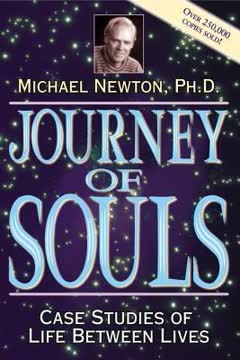

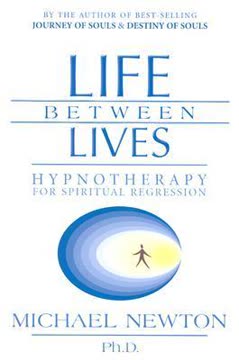
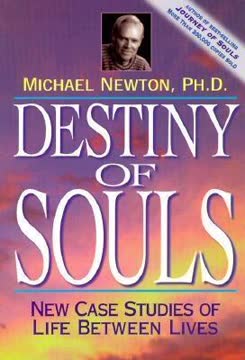
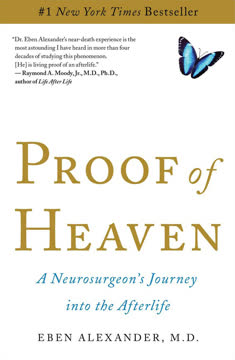
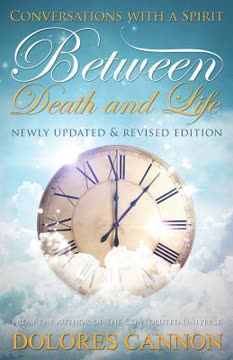
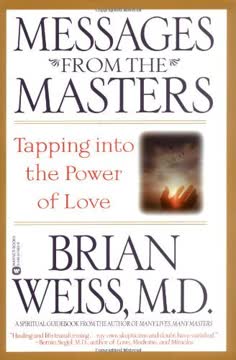
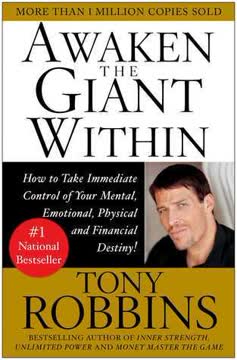
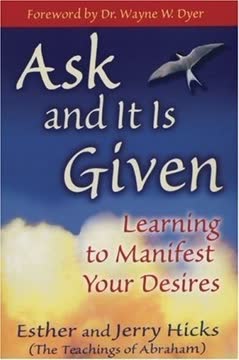
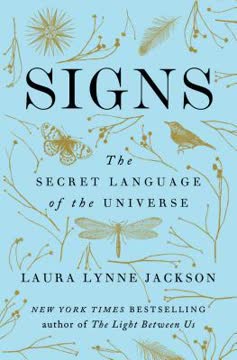
Download PDF
Download EPUB
.epub digital book format is ideal for reading ebooks on phones, tablets, and e-readers.


